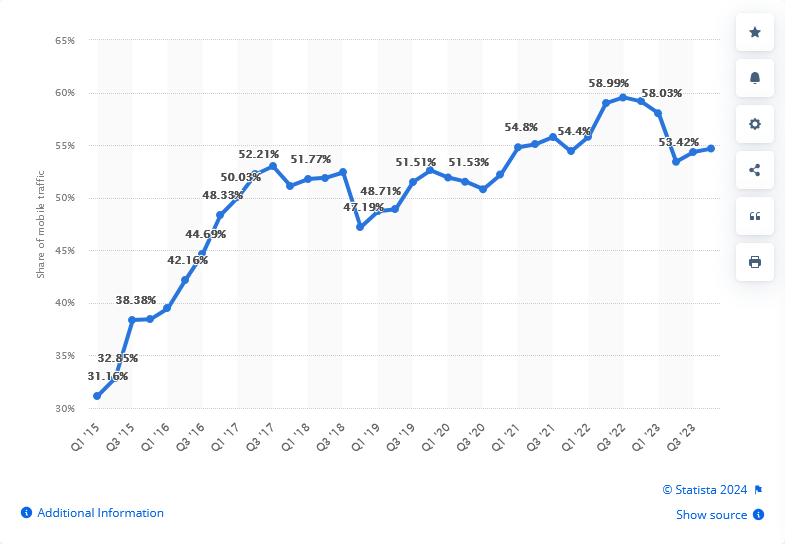In today’s digital age, mobile devices have become an integral part of our daily lives. Did you know that over 50% of global web traffic comes from mobile devices? This change in user behavior has significant implications for businesses. Mobile users tend to have shorter attention spans and expect quick access to information. If your website isn’t optimized for mobile, you risk losing potential customers who find it difficult to navigate your site on their phones.

This shift in how people access the internet means that having a mobile-optimized website is no longer optional; it’s essential. Especially when conducting a campaign (paid or organic) mostly targeting mobile users. Mobile optimization ensures that your website and digital marketing campaigns provide a seamless and engaging experience for users on smartphones and tablets.
Benefits of mobile optimization
One of the most significant benefits of mobile optimization is the improved user experience. A mobile-optimized site is easier to navigate on smaller screens, with faster loading times and intuitive navigation. This enhanced usability leads to increased engagement and retention, as users are more likely to stay on your site and return in the future.
From an SEO perspective, mobile optimization is crucial. Google has implemented mobile-first indexing, meaning it predominantly uses the mobile version of a site for ranking and indexing. Websites that are mobile-optimized tend to rank higher in search engine results, increasing visibility and attracting more traffic.
Mobile optimization also allows you to reach a broader audience. Many users access the internet exclusively through their mobile devices. This includes email campaigns, social media ads, and landing pages designed to display correctly on mobile devices. Ensuring your site is mobile-friendly makes it accessible to this growing demographic.
Best Practices for Mobile Optimization
Implementing responsive design is one of the best practices for mobile optimization. A responsive website automatically adapts to different screen sizes, providing a consistent experience across all devices. This approach is more efficient than maintaining separate mobile and desktop sites.
Speed optimization is another critical factor. Techniques like image compression and Accelerated Mobile Pages (AMP) can significantly improve mobile site speed, reducing bounce rates and increasing user satisfaction.
Simplified navigation is essential for mobile usability. Streamlining menus and reducing clutter makes it easier for users to find what they’re looking for. Additionally, designing a touch-friendly interface with larger buttons and easy-to-click links enhances the overall user experience.
Read more on how can you optimize a website for better performance and user experience.
Challenges and Considerations
While mobile optimization offers numerous benefits, it does come with its challenges. Technical difficulties in implementation can arise, but there are resources and tools available to help overcome these obstacles (some of them I already mentioned in the article about optimizing a website). It’s also important to continuously adapt and update your site as technology evolves and user expectations change.
Balancing the mobile and desktop experience is another consideration. Ensuring a seamless experience across all devices without neglecting desktop users is crucial for maintaining a broad audience reach.
Key takeaways on why is mobile optimization important for websites and campaigns
Mobile optimization is a vital aspect of modern web design and digital marketing. By improving user experience, increasing engagement, boosting SEO rankings, and expanding your reach, mobile optimization can significantly impact your website’s and campaigns’ success. As mobile usage continues to grow, ensuring your site is mobile-friendly is not just an option but a necessity. Take the time to assess your current site and campaigns, and make the necessary adjustments to stay ahead in the digital landscape.